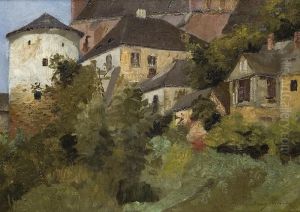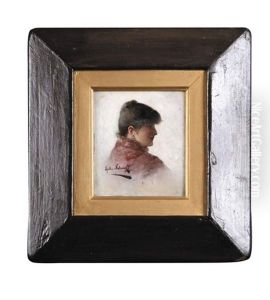Apolinary Stanislaw Kotowicz Paintings
Apolinary Stanisław Kotowicz was a Polish painter, graphic artist, and illustrator, born in 1889 in Łódź, then part of the Russian Empire, now Poland. His artistic journey began at a young age, influenced by the rich cultural tapestry of his homeland, which was undergoing significant social and political changes during his lifetime. Kotowicz's work is often associated with the Young Poland movement, an artistic and literary movement that sought to express the nation's spirit and values during a period of intense national awakening and struggle for independence.
Kotowicz pursued his artistic education at the Kraków Academy of Fine Arts, where he studied under some of the most prominent Polish artists of the time, including Józef Mehoffer and Stanisław Wyspiański. His style was deeply influenced by Symbolism and Art Nouveau, incorporating elements of Polish folklore, mythology, and the natural landscape. Kotowicz's oeuvre includes a variety of mediums, from painting and drawing to printmaking and book illustration, showcasing his versatility and innovative approach to art.
Despite his promising career, Kotowicz's life was tragically cut short. He died in 1919, at the age of 30, leaving behind a relatively small but significant body of work that continues to be celebrated for its originality and profound sense of national identity. His contributions to Polish art are remembered as part of the broader narrative of Poland's cultural resurgence in the early 20th century, a period that witnessed the birth of modern Polish nationhood after over a century of partitions and foreign domination.
Kotowicz's legacy is preserved in Poland's museums and galleries, where his works are featured as part of the country's rich artistic heritage. Through his paintings and illustrations, Kotowicz explored themes of beauty, spirituality, and the human condition, reflecting the complex socio-political landscape of his time. His art serves not only as a testament to his personal vision but also as a window into the soul of a nation seeking to define its identity amidst the turmoil of history.





